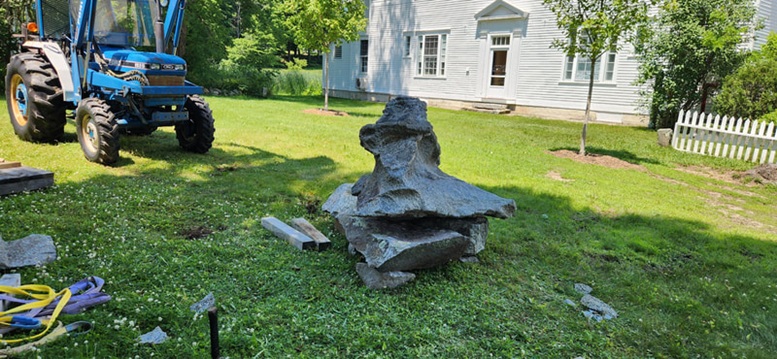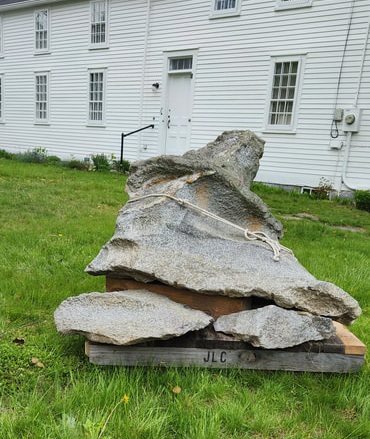The Legend of Suneta
Legend has it that Suneta was an Abenaki maiden who lived along the shores of Squam Lake. After a forced marriage ceremony to an old chieftain, Suneta’s lover Anonis, who had been away, returned to retrieve her. A fearful storm erupted, Anonis was struck by the angry chief’s arrow and drowned while Suneta was struck by lightning and turned to stone.

This stone of legend stood on a ledge at the narrows of a cove on Squam Lake in Sandwich. When viewed from a certain point, you can make out Suneta’s profile and headdress. In 1885, the entrance to the cove was widened and the Suneta stone was moved to a farm in Holderness where she remained until 2024.

Today, Suneta serves as a reminder that this land we walk upon was land stewarded by natives for over 400 generations. There are echoes beneath your feet that can still be heard if you are willing to still your mind and listen to your heart.
The Abenaki
The Abenaki, or “The People of the Dawn Land”, were indigenous people of the Northeastern Woodlands of the U.S. and Canada. They referred to this land as N’Dakinna and were allied with the larger Wabenaki Confederacy of Algonquin speakers.
Locally, they were members of the Penacook band, living along the Merrimack River Valley while subsisting on a nomadic lifestyle of hunting, fishing, trapping, farming and foraging. It is estimated that there may have been as many as 5,000 living in central New Hampshire prior to European settlement.
The Abenaki lived in bands of extended families. These bands came together in the spring and summer at seasonal encampments. One such settlement was at the outlet of Squam Lake into Little Squam Lake in Holderness. There is little evidence of Abenaki encampments in Sandwich although native artifacts have been found along our rivers and lakes.

Today, we are called upon to be stewards of this land. The earth is our mother, this land is our shared heritage. Our histories and fates are intertwined. The Abenaki’s enduring relationship with this land, based on reciprocity and caretaking for future generations, provides a model for our stewardship of this land we call home.
